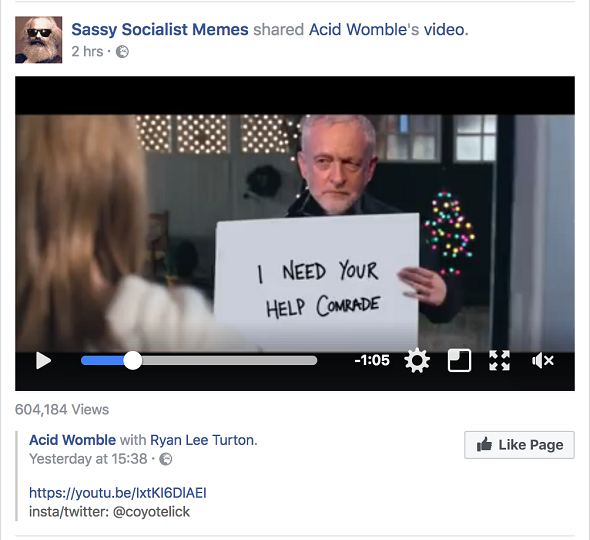


Labour vs Tory: the Battle on Social Media
Polls don't tell the whole story: that's the lesson we've learned from Brexit and Trump. How do Labour and the Conservatives measure up on social media?

When it comes to elections, polls and social media can tell very different stories. We last explored this back in November, when we took a look at how Donald Trump’s digital campaign influenced his victory.
The clear story that emerges on social media echoes the story resonating in the mainstream media: that despite polls predicting a Tory victory, Labour have been regaining ground in leaps and bounds.
On Facebook, the difference is stark. Labour has seen a 70% increase in followers since the election was called (from 540k to 921k); for the Conservatives, it’s been only 7% (from 564k to 603k).
On Instagram too, Labour are in the lead. Jeremy Corbyn has 72.8k followers: the top posts are videos from celebrities such as Steve Coogan, MIA and Nick Frost voicing their support. Theresa May’s Instagram, with 12.3k followers, consists predominantly of campaign photos and videos of her giving speeches. Unsurprisingly, Corbyn's posts on average get many more views than May's.
Labour are also bolstering their claim to be the voice of the people by communicating more with its supporters on social media than the Conservatives. Labour have been forward-thinking in their use of Facebook Messenger and chatbots - a marketing trend we predicted, and which we expect to see more of in the future.

When I check out Labour’s Facebook page, a messenger tab automatically opens encouraging me to interact with the Labour chatbot, which gives info on where to vote, how to help out, the policy forum, and who to email if I have questions. The Tories’ Facebook page has no such feature.
Similarly, Labour have posted over 30 posts a day in the last week across its social platforms combined, versus only 10-20 posts a day for the Conservatives.
Labour has also been achieving a much higher level of audience engagement on Facebook: 80-100k engagements in the last week, most of them positive reactions, versus just 30-40k for the Conservatives.
Labour also have an advantage in that its audience are more likely to create their own unofficial meme-like content which can disseminate virally. I’ve seen countless funny Labour posts on my Facebook, including this interesting take on that scene from Love Actually:

Of course, this isn’t the whole story. Labour are more likely to thrive on social media for the obvious reason that their supporters trend younger. Likewise, Labour’s branding – approachable, down-to-earth, appealing to youthful hope and idealism – is better suited to social media platforms. For example, humorous memes, colourful imagery and celebrity influencers all work better to convey Labour’s messaging than the Conservatives’. Theresa May’s self-styling as “the first consciously uncool prime minister” has worked quite well for her, but obviously limits her on social media.

Whatever happens today, one thing is clear: social media is more important than ever as a tool to understand and influence elections.
Posted 8 June 2017